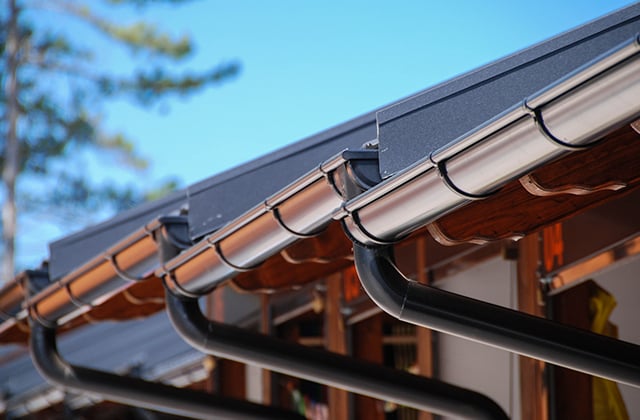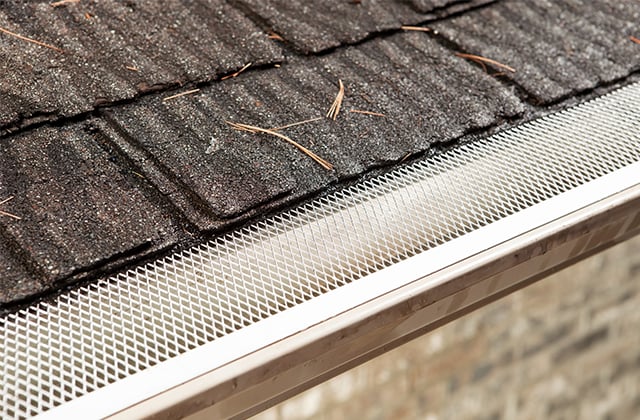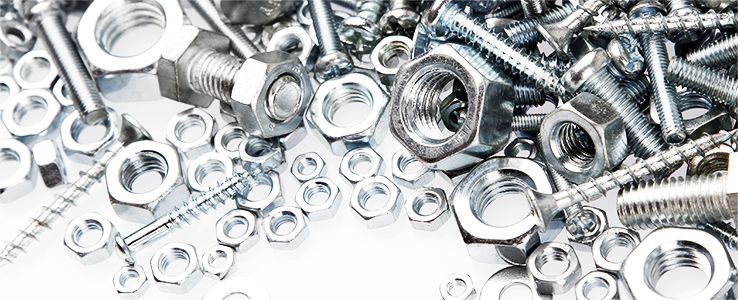The parts of a gutter
Parts of a gutter
- End cap: Piece of formed metal or PVC placed on the end of a section of gutter to close off the channel.
- Slip joint: Small part used for joining two sections of a gutter.
- Corner: A piece of gutter installed at a 90 degree angle on the edge of a roof, in the corners.
- Outside hook or mounting bracket: Long bracket screwed under the gutter to fasten it to the edge of the roof.
- Centre drop outlet: Piece of gutter that provides the hole through which water travels into the downspout. Placed at the centre of the gutter channel.
- End drop outlet: Placed at the end of the gutter, this piece provides the hole through which water travels into the downspout.




















